Photo

Achmet-Agha
The Turkish authorities do not even pretend that there was any Turk killed here, or that the inhabitants offered any resistance whatever. When Achmet-Agha, who commanded the massacre, came with the Bashi-Bazouks and demanded the surrender of their arms, they at first refused, but offered to deliver them to the regular troops or to the Kaimakam at Tatar Bazardjik. This, however, Achmet-Agha refused to allow, and insisted upon their arms being delivered to him and his Bashi-Bazouks.
Christians and Turks
After considerable hesitation and parleying this was done. It must not be supposed that these were arms that the inhabitants had especially prepared for an insurrection. They were simply the arms that everybody, Christians and Turks alike, carried and wore openly, as is the custom here. What followed the delivery of the arms will best be understood by the continuation of the recital of what we saw yesterday.
At the point where we descended into the principal street of the place, the people who had gathered around us pointed to a heap of ashes by the roadside, among which could be distinguished a great number of calcined bones. Here a heap of dead bodies had been burnt, and it would seem that the Turks had been making some futile and misdirected attempts at cremation.
A little further on we came to an object that filled us with pity and horror. It was the skeleton of a young girl not more than fifteen, lying by the roadside, and partly covered with the dobris of a fallen wall. It was still clothed in a chemise ; the ankles were enclosed in footless stockings; but the little feet, from which the shoes had been taken, were naked, and owing to the fact -that the flesh had dried instead of decomposing, were nearly perfect Guided Istanbul Tour.
There was a large gash in the skull, to which a mass of rich brown hair nearly a yard long still clung, trailing in the dust. It is to be remarked that all the skeletons of women found here were dressed in a chemise only, and this poor child had evidently been stripped to her chemise, partly in the search for money and jewels, partly out of mere brutality, then outraged, and afterwards killed.
0 notes
Photo
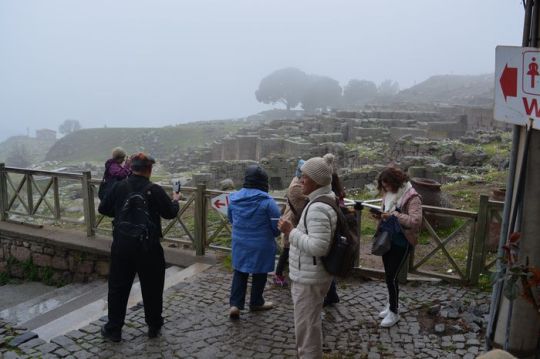
Arisen here as follows
The troubles seem to have arisen here as follows ; and I will only preface the relation of what occurred with the remark that the same atrocities and horrors, the same scenes of pillage, violence, and massacre occurred here as elsewhere. If I do not dwell upon them more in detail it is because I think I have already given the reader a sufficiently clear idea of what the pillage of a village and the massacre of its inhabitants really means, and it is useless to go on repeating these harrowing stories to infinitude.
Perustitza was a place of 350 houses and from 2,000 to 2,500 inhabitants. It was nearly the only village where anv real resistance was offered, the Bashi-Bazouks, and the people here defended themselves with far more vigour unprepared as they were, than did the inhabitants of Otluk-kui, who had gone to the trouble of making fortifications. But, in spite of the assertions of the Turks, I do not think that Mr. Schuyler has obtained any evidence to show that there was anything like a real insurrection here. All that can be made of the mass of conflicting evidence is that the country was in a state of great agitation and excitement owing to the circulation of rumours about the intended declaration of war by Servia ; that the Christians and Mussulmans were about equally afraid of each other, and that the former especially were in a state of panic, only too well justified by subsequent events.
The inhabitants of Perustitza deny that there was any insurgent committee in the village, or that any insurrection was organized here. The only proof the Turks offer of the contrary, was that many of the people had buried their valuable effects early in the spring, and had planted their crops over them so as to effectually hide them, thus giving evidence that they knew an insurrection was preparing weeks before it actually broke out. This is simply no proof at all Guided Tours Turkey.
These Bulgarians are so accustomed to lawless acts of violence, to spoliation and robbery by Turkish officials, as by thieves and brigands, that they always keep whatever little money they may have put by buried in the ground, and upon the slightest alarm they bury everything valuable that they have no immediate use for and that will not spoil by being put in the earth. This fact is rather an evidence of Turkish misrule than of anything else, and only shows the general state of insecurity in which people live here.
0 notes
Photo
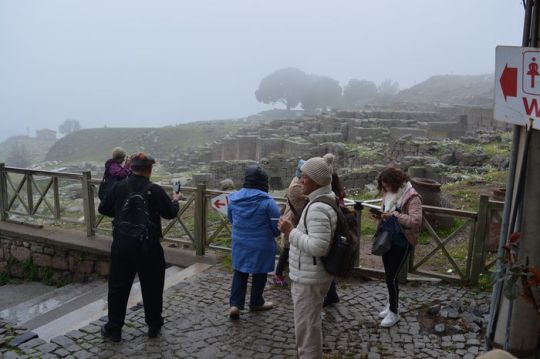
Arisen here as follows
The troubles seem to have arisen here as follows ; and I will only preface the relation of what occurred with the remark that the same atrocities and horrors, the same scenes of pillage, violence, and massacre occurred here as elsewhere. If I do not dwell upon them more in detail it is because I think I have already given the reader a sufficiently clear idea of what the pillage of a village and the massacre of its inhabitants really means, and it is useless to go on repeating these harrowing stories to infinitude.
Perustitza was a place of 350 houses and from 2,000 to 2,500 inhabitants. It was nearly the only village where anv real resistance was offered, the Bashi-Bazouks, and the people here defended themselves with far more vigour unprepared as they were, than did the inhabitants of Otluk-kui, who had gone to the trouble of making fortifications. But, in spite of the assertions of the Turks, I do not think that Mr. Schuyler has obtained any evidence to show that there was anything like a real insurrection here. All that can be made of the mass of conflicting evidence is that the country was in a state of great agitation and excitement owing to the circulation of rumours about the intended declaration of war by Servia ; that the Christians and Mussulmans were about equally afraid of each other, and that the former especially were in a state of panic, only too well justified by subsequent events.
The inhabitants of Perustitza deny that there was any insurgent committee in the village, or that any insurrection was organized here. The only proof the Turks offer of the contrary, was that many of the people had buried their valuable effects early in the spring, and had planted their crops over them so as to effectually hide them, thus giving evidence that they knew an insurrection was preparing weeks before it actually broke out. This is simply no proof at all Guided Tours Turkey.
These Bulgarians are so accustomed to lawless acts of violence, to spoliation and robbery by Turkish officials, as by thieves and brigands, that they always keep whatever little money they may have put by buried in the ground, and upon the slightest alarm they bury everything valuable that they have no immediate use for and that will not spoil by being put in the earth. This fact is rather an evidence of Turkish misrule than of anything else, and only shows the general state of insecurity in which people live here.
0 notes
Photo

Beneath the stones
Beneath the stones and rubbish that cover the floor to the height of several feet, are the bones and ashes of 200 women and children burnt alive between those four walls. Just beside the schoolhouse is a broad shallow pit. Here were buried a hundred bodies two weeks after the massacre. But the dogs uncovered them in part. The water flowed in, and now it lies there a horrid cesspool, with human remains floating about or lying half exposed in the mud. Nearby, on the banks of the little stream that runs through the village, is a sawmill. The wheel-pit beneath is full of dead bodies floating in the water. The banks of this stream were at one time literally covered with corpses of men and women, young girls and children, that lay there festering in the sun, and eaten by dogs.
Even Tatar Bazardjik
But the pitiful sky rained down a torrent upon them, and the little stream swelled and rose up and carried the bodies away, and strewred them far down its grassy banks, through its narrow gorges and dark defiles beneath the thick underbrush and the shady woods as far as Pestera, and even Tatar Bazardjik. forty miles distant. We entered the churchyard, but the odour here became so bad that it was almost impossible to proceed. We took a handful of tobacco, and held it to our noses while we continued our investigations Istanbul Private Tours.
The church was not a very large one, and it was surrounded by a low stone wall, enclosing a small churchyard about fifty yards wide by seventy-five long. At first we perceive nothing in particular, and the stench is so great that we scarcely care to look about us, but we see that the place is heaped up with stones and rubbish to the height of five or six feet above the level of the street, and upon inspection we discover that what appeared to be a mass of stones and rubbish is in reality an immense heap of human bodies covered over with a thin layer of stones.
0 notes
Photo
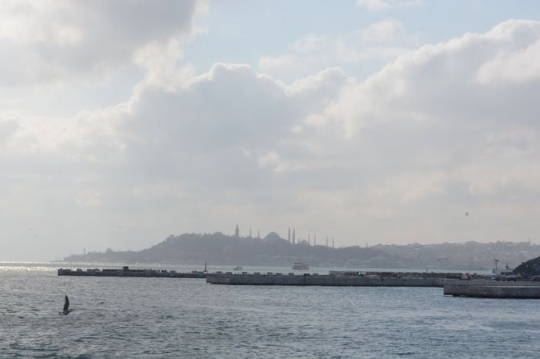
Sir Henry’s place
Or a strong man may be sent in Sir Henry’s place, who will go so far as to make urgent representations to the Porte, or who may even go the length of making strong representations. The Porte will promise everything. It will give assurance of the most benevolent intentions, it will utter the most philanthropic protestations, the Government will issue more paper reforms, the diplomatists will be satisfied, and that will be the end of it.
It cannot be otherwise. There are not a dozen Turks in the empire who see the necessity of reform. There is nobody to carry out the reforms. The Mutld-serif of Philippopolis told the simple truth when he said he had no better Mudir to send to Otluk-kui instead of the drunken beast who is there now. But they would not carry out reforms if they could. The Mutld*serif of Philippopolis has the reputation of being too favourable to the Bulgarians, and when we were there the Turks were loudly demanding his recall.
He seemed like a very honest, conscientious man, desirous of doing what was right. He entered into the question of the misery of the burnt-out people with Mr. Schuyler and Mr. Baring in an earnest serious way, that carried with it the conviction that he was really working hard to relieve their sufferings. He said money was to be given them, their cattle to be restored, their houses rebuilt, and every possible thing done for them. He was so earnest, so serious, so thoroughly convinced of the necessity of these measures, that you could not doubt his good intentions City Tours Istanbul.
And yet, not only are the cattle not restored, not only are the houses not rebuilt, but Mr. Schuyler has found that this same plausible, earnest, conscientious governor, at the very moment that he was making these promises to him and Mr. Baring, was issuing the strict orders that the people of Batak, as well as of the other burnt villages, be forced to pay their regular taxes as though nothing had happened. And this is one of the good men—one who is so friendly to the Bulgarians that the Turks demand his recall.
0 notes
Photo
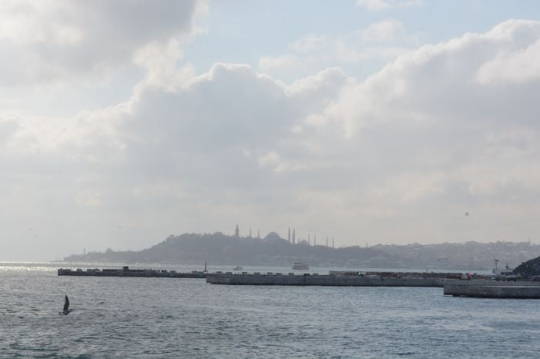
Sir Henry’s place
Or a strong man may be sent in Sir Henry’s place, who will go so far as to make urgent representations to the Porte, or who may even go the length of making strong representations. The Porte will promise everything. It will give assurance of the most benevolent intentions, it will utter the most philanthropic protestations, the Government will issue more paper reforms, the diplomatists will be satisfied, and that will be the end of it.
It cannot be otherwise. There are not a dozen Turks in the empire who see the necessity of reform. There is nobody to carry out the reforms. The Mutld-serif of Philippopolis told the simple truth when he said he had no better Mudir to send to Otluk-kui instead of the drunken beast who is there now. But they would not carry out reforms if they could. The Mutld*serif of Philippopolis has the reputation of being too favourable to the Bulgarians, and when we were there the Turks were loudly demanding his recall.
He seemed like a very honest, conscientious man, desirous of doing what was right. He entered into the question of the misery of the burnt-out people with Mr. Schuyler and Mr. Baring in an earnest serious way, that carried with it the conviction that he was really working hard to relieve their sufferings. He said money was to be given them, their cattle to be restored, their houses rebuilt, and every possible thing done for them. He was so earnest, so serious, so thoroughly convinced of the necessity of these measures, that you could not doubt his good intentions City Tours Istanbul.
And yet, not only are the cattle not restored, not only are the houses not rebuilt, but Mr. Schuyler has found that this same plausible, earnest, conscientious governor, at the very moment that he was making these promises to him and Mr. Baring, was issuing the strict orders that the people of Batak, as well as of the other burnt villages, be forced to pay their regular taxes as though nothing had happened. And this is one of the good men—one who is so friendly to the Bulgarians that the Turks demand his recall.
0 notes
Photo

The struggle which turned into a National Revolution
The end of the 18th and the beginning of the 19th century were marked by a decline in the political and economical life in the Ottoman Empire. The successive wars with Russia from 1786 to 1829 led to providing the Tsar’s right of patronizing the Balkan Christians. Despite the aggressive intentions of Russia to lay its hands on the Straits – the Bosporus and the Dardanelles – and gain access to the Aegean Sea, the wars played a positive role for the development of the Bulgarian and the other Balkan national liberation movements. Now the Eastern Question was already regarded in two aspects: the struggle of the peoples enslaved by Turkey for political emancipation and the rivalry among the Great powers for partition of the territorial inheritance coming from the declining Ottoman Empire.
During the first half of the 19th century some Bulgarian refugees left their homeland to form communities in Wallachia, Bessarabia and Southern Russia, and took part in the Russian-Turkish wars. Bulgarian volunteers fought actively in the two successive Serbian uprisings initiated in 1804. Bulgar-ians participated also in the Greek national revolution of 1821-1829. In the 50’s, during the Crimean war, the young Bulgarian revolutionary George Rakovski (1821-1867) – considered as the founder of the organized national liberation movement Holidays Bulgaria – set up a Secret Society in Constantinople whose task was to urge the Bulgarian people to rise in an armed struggle in the course of the military action.
Serbian government
With permission from the Serbian government and with the help of Italian secret societies Rakovski organized the training of a regiment in Belgrade known as the First Bulgarian Legion. Among its soldiers was Vasil Levski (1837-1873) – the future great revolutionary. In 1862 this Legion took part in a clash with the Turks but after a turn in the political relations between Serbia and the Supreme Porte was disbanded. Bitterly disappointed. Rakovski came to believe that liberation should be gained by employing Bulgaria’s own national forces. Later, after the utter defeat of the biggest detachment led by Hadji Dimitar and Stefan Karadja which crossed the Danube to fight the Turks in the summer of 1868, was closed the last page of the detachment tactics’ period of the national liberation movement. The unsuccessful Second Bulgarian Legion formed in the same year proved that too. A new stage in the struggle commenced: an Internal Revolutionary Organization was set up in 1869 under the leadership of the newly established Bulgarian Revolutionary Central Committee. Ahead of this committee stood Liuben Karavelov (1837— 1879), Levski and Hristo Botev (1848-1876).
0 notes
Photo

Kaiser William II
The exhibition part is divided into three: the outer garden, the inner garden, and the inner apartments. In the former one can have a fine drive. In it is also to be seen Merassim Palace, which was built for Ii.M. Kaiser William II. and occupied by him during his two visits to Constantinople. (Ho admission to it.) Also the Persian Kiosk, built for the Shah of Persia in 1900, but which he did not occupy, as it was not ready. Visitors are admitted.
The inner garden has a small artificial rivulet on which the Sultan and his wives used to go on canoes and cycle-boats. (Visitors can make use of these boats.)
The Kiosk Djihan Kouma is worth a visit for its magnificent view and the large telescope, which visitors can use. The immense collection of pigeons is worth an inspection for both the variety and number.
Tsit Kiosk, a low and unpretending building where the Sultan used to receive foreign ambassadors in audience. In the large sitting- room a secret door is shown in the wall through which the Sultan used to unexpectedly appear or disappear.
The small mosque, in [Renaissance style, standing just outside Yildiz grounds, is Hamidieh Mosque, at which Sultan Hamid invariably attended prayers every Friday.
Orta Keui, the next stopping-place, a large village bisected by a stream, is the ancient Byzantine village of St. Phocas, so called from the monastery and church which formerly stood here, but of which the latter alone remains. The lower part of the village is inhabited by Jews, and the upper part by Armenians and a few Greeks. The Orta Keui market-gardens are said to grow the best fruit and flowers sold in Constantinople market. The large Yeni Yalideh Mosque, jutting out into the sea, near the landing-stage, was built by Sultan Abd-ul-Aziz’s mother, and is the one which that Sultan usually attended. Many of the large wooden houses along the shore are the Yalls or water-side residences of ministers of state, pashas, and other dignitaries.
Kuru Cheshmeh, the next station, was a little more than a century ago the residence of the Hospodars of Wallachia and their descendants; but now is a wretched village inhabited by Jews, Armenians, and a few Greeks. No vestige now remains of the legendary laurel-tree formerly in this village, which is said to have been planted by Medea when she came here with the Argonauts.
0 notes
Photo
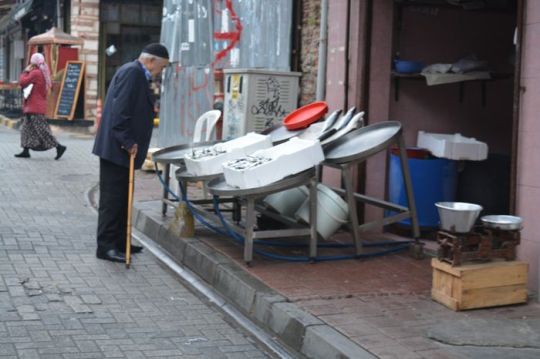
Temple of Diana at Ephesus
The aisles are divided into three bays corresponding to the main dome and two half-domes of the nave. The central bays (M,M) are screened off from the nave by lattice-work (N,N); the four green marble columns in the lower storey of either screen came from the Temple of Diana at Ephesus. The eight columns of porphyry separating the other bays from the four recesses are said to have been brought to Rome by Aurelian from the Temple of the Sun at Baalbek; they were given to Justinian by a patrician lady named Marcia, as a propitiatory offering for the salvation of her soul.
The capitals of all the columns are exquisite specimens of sculpture; and it is hard to tell what particular style of architecture they belong to, unless they are to be called Greco-Gothic. They are in imitation of a thistle, and are adorned with various monograms, chiefly those of Justinian and Theodora. According to an anonymous writer, they were gilt with real gold.
On the ceiling of the apse is a picture of Christ in the act of benediction, already referred to; the twelve medallions over the columns of the third aisle contained the bas-reliefs of the twelve apostles, which have been removed by the Turks. The black and white marble square within the basilica is supposed to be a model of the Temple of Solomon at Jerusalem.
The church was converted into a mosque immediately after the capture of Constantinople by the Turks, and Muhammad II. first said his prayers in it on Friday, 1st June, 1453. Mecca, towards which all Muhammadans turn their faces when praying, bearing S.E. from St. Sophia guided tours istanbul, prevented the Turks from placing the Mihrab (P) (altar), a stone or niche indicating the direction in which Mecca lies, where the Christian altar formerly stood, and necessitated the placing of the Mihrab between the eastern and southern windows, which consequently caused all the carpets and matting to be placed in the same direction, thus producing a strange architectural effect, by conveying the idea that St. Sophia is built with a slight slant.
Maafil-i-Humayun
Near the Mihrab is the Minber (Q) (pulpit), only used on Fridays, from which the Kiatib (reader) clad in a long red robe recites the Hutbeh or prayer for the Sultan. At St. Sophia, as in all other mosques which were formerly Christian churches, the Kiatib grasps a drawn sword as well as a Koran while reciting this prayer. The Maafil-i-Humayun (R), or the Sultan’s private pew, next to the Mihrab, on eight ancient columns, and surrounded by a shining sun, was erected by Messrs. Fossati during the last restoration of the mosque. The little gallery opposite the Minber is for the muezzins or chanters, who chant the service, and is called Maajil. Of the eight green shields high up, that to the right of the Mihrab bears the name of God; the one on the left the name of Muhammad; the remaining six bear respectively the names of the Caliphs, Abu – bekr, Omar, Hassan, Ali, Osman, and Hussein.
The two large alabaster jars for ablutionary purposes, on either side of the main entrance, were brought from the island of Marmora by Sultan Murad III. One of the two Mecca prayer-carpets on the walls, near the imperial pew and the Maafil, is said to have belonged to Muhammad II., and to have been used by him the first time he said his prayers in St. Sophia. On a stone in the wall of the south-east bay, just behind the Maafil, is the print of a bloody hand and its five fingers, ascribed by tradition to Muhammad II., the mark of a hand and five fingers having from the days of Murad I. been adopted as the ruler’s sign- manual, and being the origin of the imperial monogram. In the north-west part of the north aisle is a bronze-sheathed column with a hole in it, which Muhammadans believe to be always damp and to possess miraculous healing powers; sufferers put their finger into the hole and afterwards apply it to the afflicted part of their bodies, in the hope of a miraculous cure.
1 note
·
View note
Photo
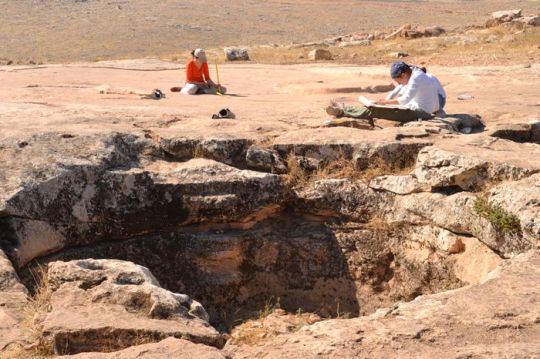
WALL PAINTINGS FROM TOMBS IN THE NECROPOLIS OF SERDICA
The mosaic depicts the early Christian notion of the Paradise – the Garden of Eden, composed of symbols.
2. WALL PAINTINGS FROM TOMBS IN THE NECROPOLIS OF SERDICA 3 fragments
4th century Fresco 0,72 x 1,04 x 0,25 m 0,55 x 0,80 x 0,16 m 1,5 x 0,93 m
From tombs in the Eastern Early Christian necrop-olis around St. Sophia Church in Sofia
Decorated with candelabra and wine sprouts. K. M.
3. WALL PAINTING WITH THE IMAGE OF AN ANGEL
A fragment Triumphal Arch First half of the 4thcentury Fresco 1,40 x 1,60 m
A sector of the murals the interior. Removed from the arch in the Red Church, Perushtitsa, Plovdiv region, in 1920!
An Angel holds a medallion with Agnus Dei in hands raised above his head.
4. EPITAPHSFROMTHEEARLYCHRISTIAN NECROPOLIS OF SERDICA
5th- 6th centuries 4.1 MARBLE 39 x 43 x2,2 cm Inscription in Latin in 3 lines
+ HIC R …V1ESC1T/ T. IOANNES FIUVS bulgaria tour QEORGIINEVSTRIS
Epitaph ofTlitus]Ioanns, son of the illustrious Georgios
The inscription accompanied by a palmette and an ornament
4.2 MARBLE 21 x 51 x 5 cm Inscription in Latin in 3 lines
+ HIC REQUIESCET U1R THEUPREPIUS / EPISCOP +
Epitaph of the most beatific man Bishop
4.3 MARBLE
24 x 26,5 x 2,5 cm Inscription in Latin in 3 lines + DECIUS HIC I FAMULUS … / ANDRAE Epitaph ofDecius, servant of Saint Andrew An ivy leaf carved below the inscription
4.4 SANDSTONE
27 x 27 x 4,5 cm Inscription in Latin in 4 lines
+ CONTANTIA / NUSICEST POS / ITU- SUTREQI / ES CATIN CELI +
Epitaph of Constantine, interred to rest in heaven
A serpent carved below the inscription
5. EPITAPH OF EUGENIA DEACONESS
Local work June 12th 538 Marble 1,18 x 0,65 x 0,08 m 13-line inscription in Greek:
Here rests Eugenia who died as a deaconess, once living in the house (= church) of the famous Apostle Andrew, and ending her pious life on 12th June, indictio I under the reign of our God-like and devout Emperor Flavius Justinian, great Augustus and Autocrat, when the Consul was Flavius Julius
Discovered at Nebush site, nearby the Mineral Baths of the village of Eleshnitsa, Blagoevgrad re-gion, set up in the altar of the local church.
6. PORTRAIT OF A MAN
Eocal work out of a local stone 6th century Sandstone H. 26 cm; w. 11 cm; d. 19 cm
Discovered within the debris of a Byzantine fortress near Obzor (former Gyozeken, Kozyak grad), Burgas region.
One of the rare world examples of the heroes of the new age – a stiff, universal mask covering a soul striving for the God.
0 notes
Photo

Balkantourist on the turning to Balchik
Each hotel has its own parking lot. The car repair service of Balkantourist on the turning to Balchik has good mechanics, spare parts and washing facilities. It is open from 7.00 a.m. to 8.00 p.m. Tel. 6-53-16. There is a filling station open 24 hrs near the Kosharata restaurant. Near the Casino is a rent-a-car service open from .00 a.m. to 10.00 p.m. Tel. 6-53-63.
Places of entertainment and night dubs offer pleasant and varied programmes.
Tsiganski Tabor (Gypsy Campj Night Club serves delicious dishes and excellent wines in Gypsy tents to the music of a Gypsy orchestra. Open from 9.00p.m. to 2.00 am.
Koukeri (Masked Dancers) Night Club — an original architectural building; ‘Koukeri’ dances are performed with quaint folk masks. The night club commands a marvellous view of the whole resort Open from 9.00 p.m. turkey sightseeing to 4.00 a.m.
Karakachanski Stan, The atmosphere is reminiscent of nomad Karakachan shepherd settlements in the Rhodopes. It is situated in the forest next to the Kolibite. Open from 4,00 p rh. to 2.00 a.m.
Vodenitsata — an original folk restaurant serving grilled chicken, kebabs, home-made sausages and freshly baked bread. Open from 9.00 a.m. to midnight.
Astoria Bar – a modern night club, open May to October. Interesting floor show, music and dancing. Next to Hotel Astoria. Open from 10.00 p.m to 4.00 a.m.
Caney Night Club — exotic atmosphere, Cuban cocktails, firstclass orchestra. Adjacent to Havana Hotel. Open from 4.00 p.m. to midnight.
Prifon Zarezan Restaurant. An original restaurant with a special room for wine-tasting. Bulgarian cuisine and a well- stocked bar. On the road to Varna. Open from 9.00 aan. to midnight.
Lovna Sreshta in a wood close to the Aladja Rock Monastery serves local game dishes. Orchestra. Open from 9.00 a.m, to midnight.
Picnic — a taverna in the heart of the forest near Lovna Sreshta. Grills and excellent drinks are served. Nightly programmes of folk songs and dances. Open from 5.00 p.m. to 10.00 p.m.
The Rocky Monastery
The Rocky Monastery three kilometres from Zlatni Pyas- satsi in one of the most picturesque areas of the Bulgarian Black Sea coast is an old monastery carved from the rocks, consisting of an upper and a lower part. The cells are two and a half by two metres. 1 he church is 11.70 metres long, 5 metres wide and 2 metres high. The altar has two alcoves wit mural paintings. The monastery was most probably founded in the 13th-14th century. 300 metres away are the catacombs — cells carved out of the rock and probably used as dwellings by the monks.
The Museum of the Chalcolytic Necropolis (discovered in 1975) is to be found at the entrance of the monastery. It holds old ornaments, weapons and other artefacts.
The Varna Chalcolytie Necropolis, discovered in 1972 on the western outskirts of the city, is an exceptional find which aroused wide international interest The Necropolis dates from the end of the Chalcolytie period, 3,000 B.C By the end of 1976, 81 graves had been found, 25 of them symbolic graves with no skeletons In grave Number One, was a treasure-trove of ornaments, artefacts of solid heaten gold (23.5 carats), 3 bracelets, a rectangular plate, 2 thimbles, 6 rings, 28 round plates, 6 trapezium-shaped and 4 moon-shaped plates, 160 cylindrical beads, with a total weight of 1,091 kg, copper tools, flint knives, a bone knife, 2,095 beads and various ceramic pieces. In graves Number 2,3 and 15 gold artefacts were discovered such as plates, rings and beads. Grave Number 4 contained gold bracelets, plates, rings, beads and other things with a total weight of 1,518 kg, as well as two clay vessels full of gold ornaments.
In Grave Number 43 the skeleton was found of a man about 40-50 years of age with various rich ornaments as well as several hundred gold artefacts totalling 1,516 kilograms and other copper and clay vessels and ornaments. This must have been the grave of a nobleman.
0 notes
Photo
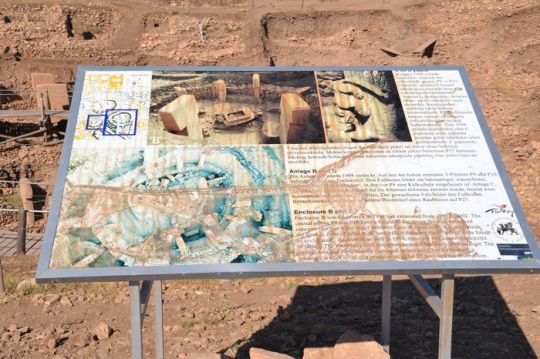
Bulgaria’s prettiest towns
We now head for one of Bulgaria’s prettiest towns, Gabrovo (pop. 80,000), situated in the mountains in the narrow valley of the Yantra. The town was founded in the 14th century. Legend says that after Bozhena founded the village of Bozhentsi, her son Racho settled on the banks of the Yantra and built himself a smity near an ancient tree, and later the town was named after that tree. During Ottoman rule many crafts developed such as homespun and furriery. Gabrovo was famous in the Ottoman Empire for craft.
The town flourished in the 19th century, with the innovation of the water wheel from Transylvannia. Woollen braid, homespun articles, rugs, wood and iron articles were manufactured which found a market beyond the boundaries of the Ottoman Empire. The economic rise boosted the town’s cultural development and a monastery school was founded in 1825, and in 1835 the first new Bulgarian secular school was set up with the assistance of merchants from Gabrovo, who lived in Odessa. The citizens of Gabrovo took an active part in the rebellions and uprisings of the 19th century as well as in the Russo-Turkish War (1877-1878) defending Mount Shipka. The Gabrovo population were most active in the war against fascism and capitalism. Partisans from the Gabrovo-Sevlievo detachment fought fierce battles against the police and gendarmerie on Mount Bouzloudja and near the village of Balvan.
After the socialist victory. Gabrovo developed by leaps and bounds. Old industrial enterprises were modernised and new branches established.
The town has a theatre, children’s art school, district museum, library, art gallery, summer theatre, theatre of Humour and Satire — a festival of humour and satire is held here bi-annually in May. An international biennial of cartoons is also held attended by guests from Aberdeen and many other coum tries.
A technological institute was opened in 1964, in addition to pedagogical institute, technical colleges and secondary schools.
Monuments and sights
The District History Museum, 7 Balvan St.
The Aprilov Grammar School founded 1872 where many prominent Bulgarians studied sofia sightseeing.
The clock tower in May 1st Square, built in 1835.
A group of houses from National Revival times in Opulchenska St.
Church of Virgin Mary, with its remarkable iconostasis.
In front of the Aprilov Grammar school is the Vassil Aprilov Monument built in 1935 to mark the centenary of the opening of the first Bulgarian secular school.
The monument to Racho the Blacksmith stands on a rock in the middle of the Yantra.
The Ossuary in the new part of the town is a compound of sculptural figures, a sacrificial altar, a rostrum and memorial plaques with the names of fallen partisans from 1923-1944.
Mitko Palaouzov Monument built near the school where the young partisan studied.
Hotels: Balkan, 14 Emanouil Manolov St., tel. 2-19-11, two stars, accommodating 415, restaurant, three banqueting halls, coffee shop, day bar.
0 notes
Photo

The marshland around the Danube
The marshland around the Danube has now been drained with only Lake Sreburna being left as a reserve.
Bulgaria has three kinds of lakes: coastal, Karst and Alpine, with the latter found mainly in the Rila and Pinn Mountains. Large dams have been built since Bulgaria became a republic seiving both as a source of power and for irrigation and water supply.
The Black Sea, once known as Pontos Euxinos and part of the Mediterranean, divides Europe and Asia. The Bosphorus links it with the Sea of Marmara, and the Kerch straits with the Azov Sea. It covers an area of 413,488 sqjcm. and reaches a depth of 2,245 metres. The bays of Varna and Bourga^ with their well appointed ports act as Bulgaria’s link with other maritime nations. At the end of 1983, Bulgaria’s population was 8,949,300, 65% living in urban conditions, out of which 1,200,000 live in Sofia alone.
HISTORY
Many artefacts bear witness to present-day Bulgaria having been inhabited since the Paleolithic and Neolithic Ages. The oldest known inhabitants were the Thracians, who were a particularly sophisticated people. At the end of the 5th century BC they founded their own state — the Odrisaw Kingdom, extending over the Balkan Peninsula east of the rivers Isker and Strouma city tours istanbul. Roman influence in the Balkan Peninsula spread after 2nd century B.C. After long battles with the Thracian tribes, the Romans succeeded in conquering the Peninsula.
Bulgarians of Khan Asparouh
The First Bulgarian State was founded in the 7th century by agreement among the proto-Bulgarians of Khan Asparouh, originating from around the Azov Sea, and the Slav tribes. The state controlled the land between the Balkan Range and the (arpathians and lasted from 618-1018. Under Khan Kroum (803-814) the country consolidated and expanded. His successor Omourtag (814-831) concluded a 30-year peace treatv with Byzantium and devoted himself to construction. In 864, under Prince Boris I, Bulgarians and Slavs became Christian — an act of tremendous significance in the further development of the Bulgarian State.
Brothers Cyril and Methodius created the Cyrillic alphabet, which encouraged the Slavonic script. Under Tsar Simeon (893-927) son of Boris I, Bulgarian culture enjoyed its Golden Age, Schools were set up in the capital — Veliki Preslav and in Ohrid. Valuable manuscripts from those times are still in existence. The framework of religious literature proved too narrow for the Bulgarians and was broken. The Bogomil social and religious movement made its appearance and later spread to Italy, Southern France (Catherists and Albigenses), as well as to Byzantium, Serbia, Bosnia. Russia and elsewhere.
0 notes
Photo

Cultural and geographical proximity
Its closeness to Scythian decorative art may be explained by the ethnical, cultural and geographical proximity of these two peoples before they had come into contact with the Greeks, when cattle-raising was the economic basis of both peoples. The fate of this Thracian art is very clearly reflected in many objects in which the strong influence of Greek art is felt. Greek art was mainly instrumental in introducing plant motifs, so beloved of ancient Greek ornamentation; it was also instrumental in introducing whole subjects taken from ancient Greek mythology, in which human and animal forms overcome abstractness and come closer to nature. The silver plaques with scenes from the myth of Heracles, found in Panagyurish- te, are of special interest in this respect.
The art of building developed early among the Thracians. In the early periods it may be traced on the evidence of tomb architecture. Under the tumuli not only ordinary graves, but entire tombs are found, of great interest on account of their plan and structure. The cupola tombs are of particular interest in this respect; they are built of stone blocks, and later of bricks as well, covered with a false vault.The largest cupola tomb known so far was discovered in a tumulus near Me- zck (near Svilengrad), which is 14 m. high and has a diameter of 90 m. The tomb contains a passage 20.65m. long, 1.55m. wide and 2.40—2.60m. high, covered with a triangular vault.
Three chambers
This leads into three chambers, placed along an axis, of which the first two are square, 1.48 m. x 1.26 m. and 1.77 m.x 2.22 m.in size; the first is3.20 m. and the second 3.52 m. high, and both are covered like the passage. The third, end chamber, which is round with a diameter of 3.30 m. and a height of 4.30 m.is shaped like a bee-hive. This was the tomb chamber. Although this tomb was robbed in antiquity, a large number of bronze vessels were found here, together with the candelabrum described before, and some gold jewelry. The total length of the tomb is nearly 29.95 m holidays bulgaria. It dates back to the first half of the 4th century B. C.
The brick cupola that Kazanluk is far more modest in its dimensions. Its plan is much simpler, consisting of an open stone antechamber, a short passage and a bee-hive cupola tomb chamber built of bricks. The total length of the brick body is 5.80 m. But its wonderful murals distinguish this cupola tomb from the 13 other similar tombs known so far. They cover the entire inner surface of the passage and the vaulted chamber. Lower down the walls are covered with stucco work imitating a marble plinth, in the passage black orthostat between bands of white blocks, and in the vaulted chamber white orthostat between bands of black blocks.
0 notes
Photo
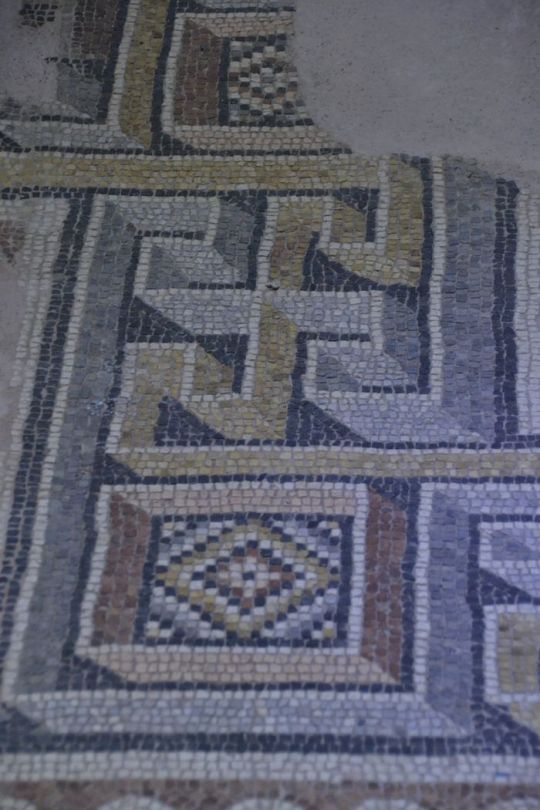
MELNIK
Melnik, one of the smallest towns in Bulgaria, is tucked away in the folds of the South-western Pirin Mountains. . . In the Middle Ages the Bulgarian boyar Alexi Slav made the town the capital of his principality (1215). From those times dates the prosperity of the town, which during Bulgaria’s National Revival (18th and 19th centuries) reached the peak of its cultural and economic development. During the Balkan War (1912- 1913), it was burned down. Today it numbers 417 inhabitants.
The most valuable and oldest architectural monument in Melnik is the Boyar House, which is in fact the oldest house in Bulgaria, built between the 10th and the 14th centuries. The impressive Kordopoulo House, which dominates the whole town, dates from the time of the Bulgarian National Revival period and is a veritable fortress. Its walls are decorated with mural paintings. Deep in its basement there is a huge wine cellar, in which tens of thousands of litres of the famous Melnik wine was kept.
The Pashova House today holds the town museum. Many wood carvings and paintings on glass are kept in it. South of Melnik in the Slav Park are the ruins of the old St Nikola Monastery, built in the 13th century. Not far away are the ruins of the fortress of the despot Alexi Slav ephesus daily tour.
Some 5-6 km east of the town is the Rozhen Monastery, which was founded in the 14th century. In the church the iconostasis is decorated with exquisite wood carving and there are rare icons and beautiful glass paintings.
Melnik is best reached from the E-20 International Highway from Sofia to Athens. The distance is some 186 km. South of the town of Sandanski, near the village of Delchevo, a road branches off to Melnik, 12 km away.
KOTEL
As legend has it, Kotel was founded in 1545 by immigrants. It is situated in the eastern folds of the Balkan Range amid wooded hills. It was called Kotel (the Bulgarian for cauldron) because it lies in a valley and the waters of its abundant springs boil as if in a cauldron. Only part of the town has survived the great fire of 1894. This part of the town is now given the status of an architectural historical reservation. The houses which have been preserved reveal the skill of the master-builders from the time of the Bulgarian National Revival. A folklore museum is laid out in one of the old houses, and not far from it, in the building of a school erected in 1869, is the Historical Museum of the town. Today in Kotel there is the first school for playing folk instruments, a school for arts and crafts, etc. The weaving of goat hair rugs and of carpets is traditionally a speciality of Kotel.
In the town there is a modern hotel with restaurant, a cafe and snack bar. In its environs there are game preserves for big game. Kotel can most easily be reached along the Sofia-Bourgas motorway turning off after Sliven at the village of Gorno Alexandrovo; the town is 43 km further on.
1 note
·
View note
Photo

People of Yehiida
The historical mind has an almost unlimited field; and all the names it records will have to be restored’ in turn. When Mosheh led forth the people of Yehiida to the promised Yerushalahn, he really led them out of Chemi or Kebthor, not out of ‘ Egypt,’ which is a Greek corruption. And Pi-Re and all his host were drowned in the Ydm-S&pk; for of course Red Sea is a mere translation of a late Hellenic term. About the central Asian monarchies we fortunately have an imperishable and infallible record; for the great king himself inscribed on the eternal rock the names of his ancestors and his contemporaries. It is therefore inexcusable in us if we continue to write the names of Oriental sovereigns in the clumsy corruptions of ignorant Greeks.
All history contains no record more authentic than the sculptured rock of Behistun, whereon the names of the great kings stand graven in characters as unalterable as the laws of the Medes and the Persians. ‘Darius,’ we used to write in our ignorant way, ‘ became King of Persia, Susiana, Babylonia, Assyria, Arabia, and Egypt.’ Not so was it said by them of old time; not Darius, but Ddraya- vush; not king, but Khshdyathiya. So, then, the geography lessons of our grandsons will run: — ‘Darayavush was the Khshdyathiya of Pars a, of ’ Uvaja, of Bab hash, of At hard, of Arabdya, of Mudraya.’
The entire orthography of the Median and Persian Dynasties is now complete and exact. It was not ‘Cyrus’ who founded the Persian Empire, as we used to be told: it was KurausJi. The famous king who perished in the desert was Kabujiya, the son of Karaiish. And both, beside their own ancestral dominion of Pdrsa, ruled over the mighty world-famous city of Babirum, and the country which lay between the rivers Tigi’dm and Ufrd- tauvd. Oriental history is at last as simple as an infant’s ABC.
And we are now able to record the immortal tale of the war between Hellas and Pdrsa with some regard for orthographic accuracy sightseeing turkey. It was Khshaydrshd who mustered the millions of Asia in the great struggle which ended in the glorious battles of the Hot Gates and of Psyttaleia. His great generals, Ariyabhaja and Mundnniya, met the Hellenic hoplites only to court defeat; and Khshaydrshd, the son of Ddryavush, at length withdrew from a land which seemed fatal to the entire race of Hakkdmanish, and sought rest in his luxurious palace of ’ Uvaja. So will run the Hellenic histories of the future, in an orthography not quite so cacophonous and hieroglyphic as many a page in the Making of England.
Oriental literature
Oriental literature is making vast strides, and the authentic books of the East are daily brought closer and clearer to our firesides. And under the influence of this learning our very children are coming to be familiar with the new dress of the old names. We have grown out of ‘ Mahomet,’ ‘ Moslem,’ ‘ Koran,’ and ‘ Hegira,’ and we are careful to write Muhammad, Muslim, Quran, and Hejra. For our old friend Mahomet and his Koran various professors contend. Mohammed, Muhammad, Mahmoud, and Mehemet have had their day; and now they are contending whether Qur’dn or Qordn best represents the exact cacophony of the native Arabic. And so on through the whole series of famous Oriental names: the Zend-Avesta, or Avesta, the Upanishads, K’ung Foo-tsze, Tsze-Kung, and Tsze-Sze. Scholars, of course, have to tell us all about the Sukhavati- Vyulia and the Pragna-Pdramita-Hxidaya- Sdtra; but the question is, if the rising generation will ever be familiarised with these elaborate names.
It may be doubted if, after all, the exact equivalent of these foreign sounds can ever be presented to the English reader by any system of phonetic spelling; all the more when this spelling has to call to its aid an elaborate system of circumflex, diphthong, comma, italic, breathing Sh’va and Daghesh, most alien to the genius of our language. Can a man, unlearned in the respective tongues, pronounce ICung-Foo-tsze, Kurfiirst of Koln, Quran, with any real correctness? And, if he cannot, is it worth while to upset the practice of Europe for centuries, and so vast a concurrence of literature, for the sake of a phonetic orthography which is almost picture-writing in its lavish use of symbols: and all in pursuit of an accuracy which can never be consistently adopted? It may look very learned, but is it common sense?
0 notes
Photo
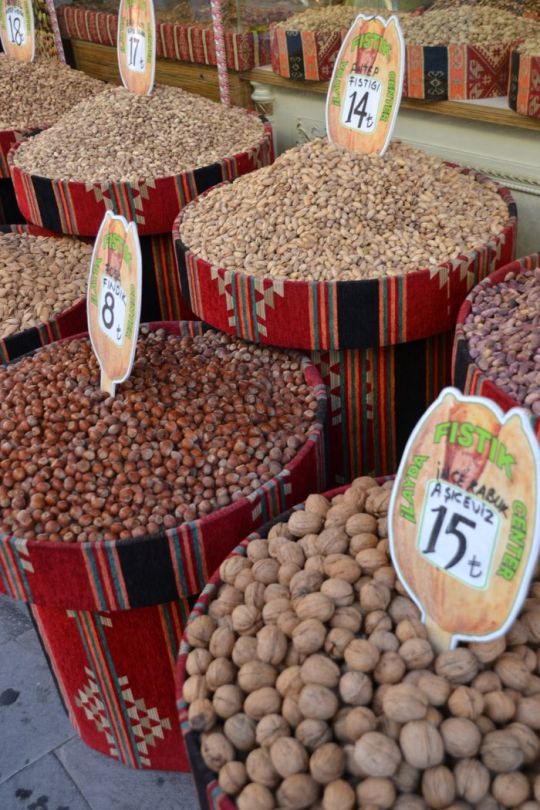
Mystic portals of Notre Dame
It is all very fine, imposing, spacious, and new. But a groan may be forgiven to those who can remember the mystic portals of Notre Dame with the gallery of the kings, surrounded with houses which seemed to lean upon the mother-church for comfort and support, before the restorer had worked his will upon the crumbling, dark, pathetic fragments of carving, whilst the noblest facade ever raised by northern Gothic builders still looked like a great mediaeval church, and not like an objet d’art to be gazed at in a museum.
This transformation, the most astounding that Europe can show, fills us ever anew with a profound sense of the power which for a century has animated the municipal government of Paris; of the energy, wealth, industrial skill, artistic imagination, and scientific accomplishments which have gone to the making of it. To plough miles and miles of broad new boulevards through the most crowded lines of an ancient, populous, and busy city; to transform a network of Ghettos into a splendid series of avenues, squares, and gardens; to eviscerate the heart of a great capital, and to create symmetry, sunniness, convenience, gaiety, and variety out of inveterate confusion, gloom, discomfort, and squalor —this impresses the mind with the visible signs of imperial might in the ruler, and inexhaustible versatility and adaptability in the governed.
It is a different thing when a Frederick plans a new city iii Berlin, or when a Republic creates itself a capital in Washington. But in Paris the capital existed; with eighteen centuries of history, with monarchic, feudal, ecclesiastical, municipal institutions by the thousand, rooted for ages in the soil, and buttressed by long epochs of prescription, privilege, law, and superstition. Not for an hour has the capital ceased to be the living heart of France; not for a day has its own activity been interrupted private turkey tours, or the lives of some million or so of citizens been broken. Republic, Consulate, Empire, Monarchy, have succeeded each other in turn. Revolutions, sieges, massacres, anarchy, tyranny, parliaments, dictators, and communes have in turn had their seat in Paris, and have occupied her streets, buildings, and monuments. But under all, the transformation of old Paris into new Paris has gone on.
Bastille Chatelet Temple Tuileries
Bastille, Chatelet, Temple, Tuileries, have been swept away: enormous boulevards and avenues have torn their huge gaps like cannon-shot through ancient quarters: abbeys, churches, palaces, hospitals, convents, gardens, halls, and theatres have disappeared like unsubstantial visions, and have left not a rack behind. As the vacant spaces are cleared, new streets, theatres, halls, and squares spring up. A thousand new fancies and hundreds of new monuments take their place with inexhaustible invention. The city grows more populous, more rich, more brilliant year by year. The busy life which is silenced in the Cite, or by the new boulevards, avenues, and places, bursts forth with a louder din elsewhere. Every creation of artistic imagination, every invention of science, is instantly brought into service and adapted to modern life. And with all this whirl of change and action, Paris remains in its essence an ancient, and not a modern, city; a very ancient city to him who knows its history, and can recall the memorials of its past.
To this day, such an one can retrace her successive circuits, her ramparts and barriers of successive dynasties; he can track out the spots made memorable by Julian, by Clovis, by Philip Augustus, by Francis i. and Henry iv., by Abailard, and Helotse, and Jeanne d’Arc, by Dante, by Descartes, by Corneille. Some two hundred streets still bear the names of saints, each recalling some convent of the Merovingian, Carlo- vingian, or Capetian dynasty, some one of the thousands of churches, chapels, oratories, and religious houses which once filled Paris. To the historical mind, the St. Germains, the St. Thomases, the St. Andris, the St. Martins, the St. Victors, the St. Bernards, which we read inscribed at the street corner, recall a series of local memorials which reach back for a thousand years. Here St. Louis stood and prayed; here the Grand Master of the Templars was burned; here Jeanne d’Arc fell desperately wounded; here Moliere died; here Corneille lived; here Coligny was murdered, here Henry iv. was stabbed; here Voltaire died, and here Camille Desmoulins opened the Revolution.
0 notes